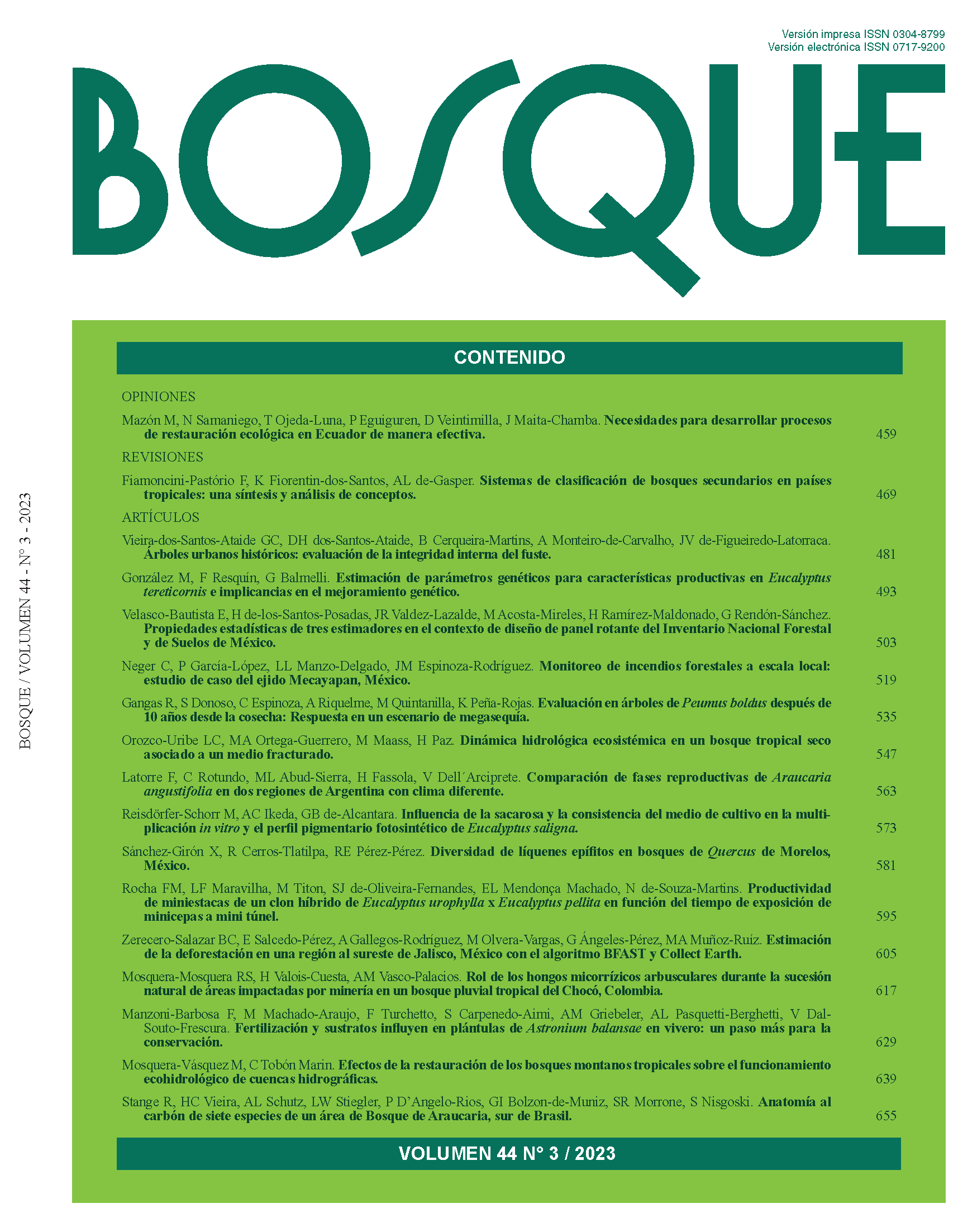Epiphytic lichen diversity on Quercus Forest from Morelos, Mexico
Main Article Content
Abstract
Oak forests, predominantly composed of Quercus species, often coexist with other tree species. Lichens are an important component of these forests. This study aimed to identify the phorophyte species present in Quercus forests within fragments of two protected natural areas in Morelos, Mexico, and to compare the epiphytic lichen community between the two sampling locations. Each selected phorophyte was measured for height, crown coverage, and breast height diameter. These variables were compared using the Mann- Whitney-Wilcoxon U-test. The lichen community was assessed at each sampling location using the first-order Jackknife nonparametric test. Subsequently, the Shannon diversity index, species indicator analysis and two-way cluster analysis were applied. The results revealed that in one locality, Quercus magnolifolia dominated, with some elements of Q. acutifolia and Harpalyce formosa. This location contained the highest tree density (59 individuals), relatively younger trees, and the greatest lichen richness (52). The most abundant lichen species were Canoparmelia cryptochlorophaea, Hypotrachyna gracilescens and Endohyalina ericina. Quercus glaucoides was found exclusively in the mature forest, with 22 individuals and 11 lichen species. The most abundant lichen species in this location were Physcia integrata, Leptogium cyanescens, and L. milligranum. The total lichen richness between both locations was 90 species (30 in the opportunistic collection). They shared only 13 species, and 20 were new records for the state of Morelos.


 https://orcid.org/0000-0002-7079-6230
https://orcid.org/0000-0002-7079-6230